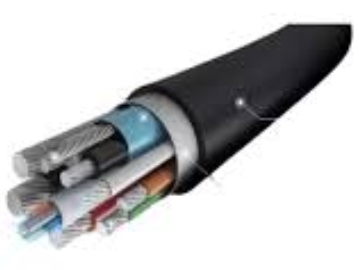Oufu Optical Fiber Cable Co.,Ltd
Address: Shenyang, Liaoning, China
Contact person: Manager Zhang
Phone: 400-964-1314
Mobile phone: +86 13904053308
【whatsapp && wechat】
2024-11-07 1437
Fiber Optical HDMI Cable: Revolutionizing High-Definition Connectivity

Understanding Fiber Optical HDMI Cables
Fiber optical HDMI cables utilize optical fibers to transmit high-speed digital signals between devices. Unlike traditional copper-based HDMI cables, fiber optics offer several significant advantages, including:
Extended Reach:
Fiber optical HDMI cables can support significantly longer lengths than copper cables without signal degradation. This is ideal for large home theaters or commercial installations where long cable runs are necessary.
Enhanced Signal Integrity:
Optical fibers transmit signals via light pulses, minimizing electromagnetic interference (EMI) and radio frequency interference (RFI), resulting in cleaner, clearer images and sound.
Higher Bandwidth:
Fiber optics support higher bandwidth capabilities, enabling future-proof compatibility with the latest HDMI standards and higher resolutions, such as 8K.
Durability and Flexibility:
Fiber optical HDMI cables are often more durable and flexible, better suited for challenging installations and environments.
Key Features to Consider
When selecting a fiber optical HDMI cable, several features should be taken into account to ensure compatibility and optimal performance:
HDMI Version: Ensure the cable supports the HDMI version required by your devices, such as HDMI 2.1 for the highest bandwidth and resolution support.
Length: Choose a cable length that matches your installation needs, taking advantage of fiber optics' extended reach capabilities.www.adsscable.cn
Connector Quality: Look for high-quality connectors that are well-made and compatible with your devices.
Certifications: Check for industry certifications, such as those from HDMI Licensing Administrator, Inc. (HDMI LA), to ensure compliance with HDMI standards.
Warranty: Consider the warranty period offered by the manufacturer, as it can provide an indication of product quality and the manufacturer's confidence in their product.
Applications and Use Cases
Fiber optical HDMI cables are ideal for a range of applications, including:
Home Theaters: For immersive home cinema experiences with extended cable runs and high-resolution content.
Gaming Setups: To minimize latency and maximize performance in high-stakes gaming scenarios.
Professional AV Installations: In commercial settings, such as conference rooms, event venues, and retail spaces, where reliability and long-distance connectivity are crucial.
High-End TV and Projector Connections: Ensuring the best possible picture quality and sound for top-tier displays.
Installation Tips
Installing a fiber optical HDMI cable can be straightforward, but a few tips can help ensure a successful setup:
Professional Installation: For complex or large-scale installations, consider hiring a professional AV installer to ensure optimal performance and aesthetic appeal.
Cable Management: Use cable clips, raceways, or conduit to keep the cable secure and organized, avoiding sharp bends or kinks that could damage the fiber optics.
Compatibility Check: Double-check the compatibility of the cable with your devices before purchase to avoid any connectivity issues.
Conclusion
The fiber optical HDMI cable represents a significant leap forward in high-definition connectivity, offering unparalleled performance, extended reach, and durability. By carefully considering the key features and applications, you can choose the right cable to enhance your home theater, gaming setup, or professional AV installation. Whether you're looking to maximize picture quality, minimize latency, or achieve longer cable runs, fiber optical HDMI cables are poised to revolutionize your high-definition experience.